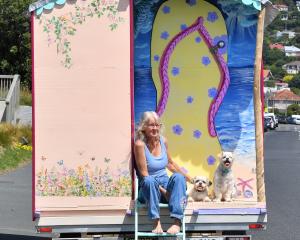A Barrier should be built across Otago Harbour to protect Dunedin from sea-level rise and help generate electricity, Dunedin city councillors were told yesterday.
In one of the more imaginative submissions so far this week, semi-retired consultative engineer David Tucker outlined the vision during day three of the council's annual plan hearings yesterday.
Mr Tucker - a former council consultant - said he believed the harbour's tides could be harnessed by installing underwater turbines at the entrance to the harbour, or by construction of a gated barrier from Port Chalmers to Portobello.
The barrier could trap water in the upper harbour as the tides flowed in, to be released at low tide through turbines to generate power, he said.
It would also protect the upper harbour and city from sea-level rise - similar to London's Thames Barrier - which could otherwise in time threaten parts of South Dunedin and the central business district, he said.
"This is done internationally in a number of places," he said.
Alternatively, turbines at the harbour's heads could generate electricity with no discernible change in the environment above the waves, having been designed not to impede shipping, he believed.
"There would be no change to the harbour environment - only underwater."
The ideas were among several Mr Tucker put forward yesterday.
Others included harnessing wind power with a series of smaller turbine projects, small hydro projects utilising the city's existing water reservoirs, or converting landfill gas into energy, which could produce "several megawatts of electricity, worth some millions of dollars", he said.
Mr Tucker, a member of the Sustainable Dunedin organisation, said it was important Dunedin considered renewable energy alternatives to end reliance on petroleum-based electricity generation, with peak oil "probably" only a decade away.
Scientists were also largely in agreement that sea-level rise was happening and the council needed to prepare for that, he said.
The various alternative energy sources could be used within Dunedin, primarily, Mr Tucker hoped, to power environmentally-friendly public transport.
He wanted to see an electric light rail service linking the city centre, South Dunedin, the Dunedin railway station, Otago stadium and university campus.












